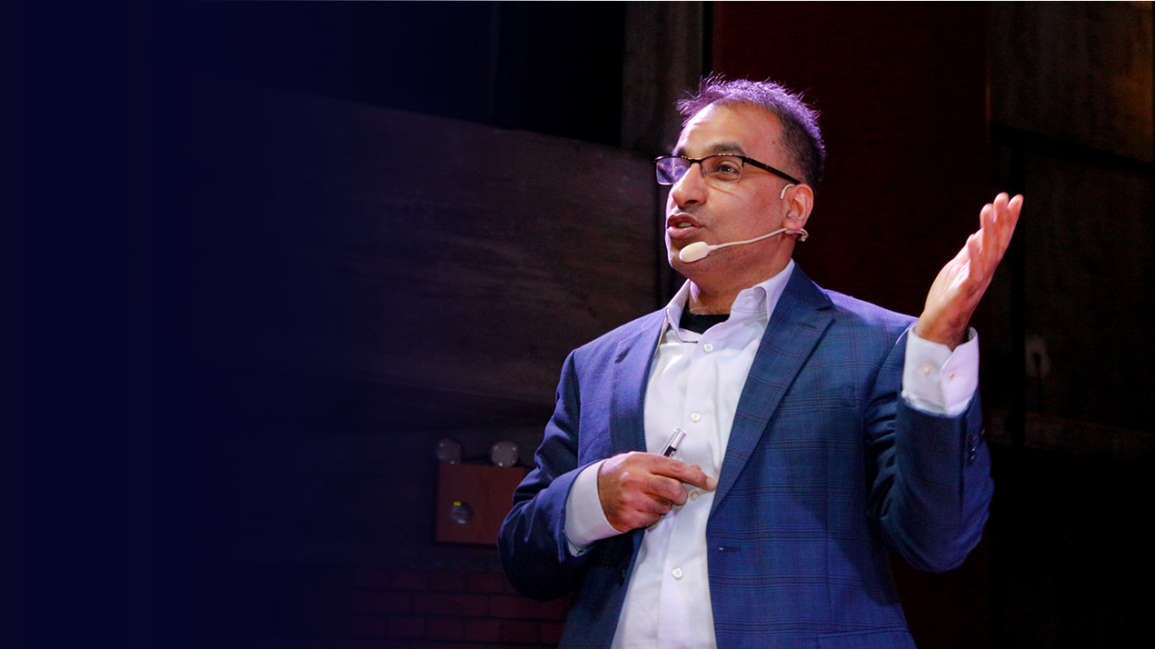Nearly 50 years ago, Martin Seligman and Steve Maier experimentally proved that human beings or animals can learn to become helpless when they experience uncontrollable situations and even give up avoiding aversive stimuli. Known as the Theory of Helplessness, this line of scientific inquiry is backed by robust research and has a major impact in explaining a number of psychological phenomena (Peterson, (1993).
I am afraid that most of our people in Pakistan have plunged into an enduring state of helplessness. The state of Helplessness has three hallmarks, Contingency, Cognition and Behaviour. Contingency relates to the controllability of the situation. Pakistanis, for more than 75 years, and particularly in the last 15 months, have learned that they have little or no control over numerous domains of their lives. Cognition relates to attributions, that is, how individuals explain the causes of setbacks, failures and adversities to themselves. It is the word in their hearts and heads. In the theory of Helplessness, most attribute the causes of their adversities to either their bad luck or to forces outside. Given the dire social, economic situation, and massive brain drainage, one can surmise about the attributions of most Pakistanis. Behaviour relates to action or inaction. People with belief that they cannot control much in their lives and that external forces are responsible for all their adversities will most likely result in inaction. It is the Learned Helplessness of 75 years that has kept beleaguered citizens of Pakistan without any agency.
However, my intent in writing this piece was to explain our collective dysphoria merely. It was my first year of doctoral studies in clinical psychology in the US when I lost both of my parents within 18 days. I rushed back to Pakistan. Grieving, I was sitting silently amidst other mourners in our inner-city Lahore’s modest home. Suddenly, I was taken aback when a tall, handsome Pathan entered the drawing room, along with my older brother, who then was active in Pakistan Tehrek Inshaf (PTI). He was Imran Khan. After offering Fatiha, Khan offered consolation but more than his words, I couldn’t help, noticing the spark in his eyes. My grieving head and heart could not fully decipher this spark.
I returned to the US shortly after, but grief-ridden depression engulfed me. One book that I read cover to cover in days, was Martin Seligman’s Learned Optimism (Seligman, 1991). It worked as an antidepressant. I was fiercely curious to learn, both from research standpoint as well as from application, as who give up easily and who doesn’t. I worked tirelessly to earn a residency spot at the University of Pennsylvania, where I was matched, luckily, one of the four out of 117 applicants. During my clinical residency, working and teaching with Marty (as we affectionately call him), I learned many things, but perhaps the most important was I finally figured out (I think so) the spark behind Khan’s eyes. I think so. It was his sense of optimism which radiated from his eyes. I will explain Imran’s sense of optimism from lens of Learned Helplessness Theory.
Fine-tuning his seminal work on Learned Helplessness, Seligman, with Abramson and Teasdale (1978) demonstrated that individuals who were taught mastery over aversive situations did not become helpless even when they encountered negative situations. Khan seems to have mastered this skill, through the trials of life. The Cricket World Cup of 1992 offers as an example. When the chips were down, and Pakistan was almost out of contention for the semi-finals, with one win from the first five matches, most other captains would have given up, explaining the causes of this fiasco in terms like this. It’s due to me (or I don’t have control over how players perform), this debacle (followed by the 1987 World Cup Semi-final defeat at the home turf), will be the lasting legacy of my captaincy and will tint my other accomplishments. Khan resisted. I am not sure, if Imran Khan was familiar with Learned Optimism Theory in 1992. Nonetheless, his subsequent speeches indicate that he knew well how to talk to oneself, when one experiences setbacks. His speech to Oxford Union, delivered in 2013, offers us a glimpse of his mindset. He stated:
Please remember one [thing], you only lose, when you give up. Remember this, over and over again, you only lose when you give up. If you do not give up, you will win from most incredible positions. The fight is in the mind. It is not physical; it is in the mind. As long as the mind refuses to accept the defeat, each setback will give you an opportunity to analyze yourself where did I go wrong. It is an opportunity. Remember, crisis is an opportunity, to evaluate yourself, where did I go wrong. Correct that. Pick yourself up. You again move on, and you will find you will get stronger each time. Each time you pick yourself up, you come back stronger. This is what the human being is (Oxford Union, March 8, 2013)
One can surmise that while facing the prospects of an early exit, Khan explained to himself; it is not entirely because of me or because of others; it is, in part, due to circumstances (he missed two five matches due to injury), and another World Cup defeat will not likely tint my other accomplishments. Perhaps not precisely in these words but having researched resilience and well-being and taught and trained alongside Seligman for the past twenty years, I doubt Khan’s inner dialogue was drastically different. Much like Learned Helplessness, Learned Optimism has three components. Permeance (the adversity will not be permanent), Pervasiveness (adversity will not ruin everything) and Personalization (adversity is not entirely due to me or entirely due to others). Learning to talk to oneself in realistic but optimistic style is key to our hope and future agency.
Imran Khan, I believe, is an exemplary illustration of Learned Optimism, Hope and Future Agency. His Learned Optimism must be the driving force which helped him to accomplish monumental tasks of making cancer Hospitals where the needy get free treatment (a luxury not available in the United States), two world-class universities, and many more. It must be his Learned Optimism, now shaped and refined by his religious convictions, that a sense of equanimity envelopes him despite living in a tiny cell with an open toilet, wet mattress, and crawling creatures around.
It is also a colossal tragedy of epic proportions that Khan’s Learned Optimism might only be outdone by the collective Learned Helplessness of our nation. Khan is far from perfect, but he is likely our only hope and perhaps the last one for a very long time.
I am keenly aware that as an expat Pakistani, I cannot fully empathize with my fellow Pakistanis who seem to be chronically trapped in the whirlpool of material needs. But I do know from research, of my own and that of my colleagues that our last fulfillment comes when we meet our meaning needs—- the quintessential attribute of a life well lived (Martinez-Calderon et al., 2023).
Imran Khan is the only leader who has constantly reminded us of our meaning and purpose. Let us not diminish his voice and his optimism.
References
Abramson, L. Y., Seligman, M. E., & Teasdale, J. D. (1978). Learned helplessness in humans: Critique and reformulation. Journal of Abnormal Psychology, 87(1), 49–74. https://doi.org/10.1037/0021-843X.87.1.49.
Khan, I. (2013). Imran Khan, Full Address Oxford Union. https://youtu.be/-UAqOQf8n6c. Accessed August 8, 2023.
Martinez-Calderon, J., Garcia-Munoz, C., Heredia-Rizo, A. M., & Cano-Garcia, F. J. (2023). Meaning and purpose in life, happiness, and life satisfaction in cancer: Systematic review with meta-analysis. Psycho-oncology. https://doi.org/10.1002/pon.6135
Peterson, C. (1993). Learned helplessness: a theory for the age of personal control / Christopher Peterson, Steven F. Maier, Martin E.P. Seligman. Oxford University Press.
Seligman, M. E. P. (1991). Learned optimism. New York, A.A. Knopf.


